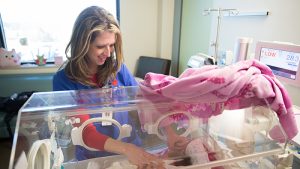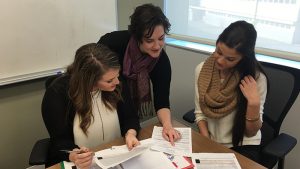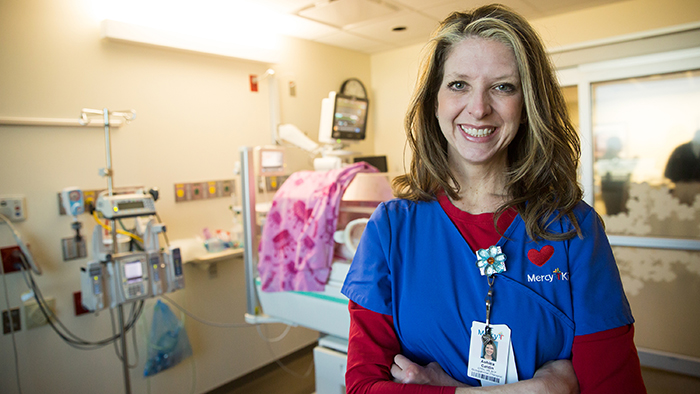 The neonatal intensive care unit (NICU) at Mercy Hospital is a hard place to be for anyone. For members of the Old Order Amish community, who prefer to live simpler lives separate from the trappings and technology of today’s world, the experience can be overwhelming.
The neonatal intensive care unit (NICU) at Mercy Hospital is a hard place to be for anyone. For members of the Old Order Amish community, who prefer to live simpler lives separate from the trappings and technology of today’s world, the experience can be overwhelming.
“Coming from an Amish community into the NICU can be a completely foreign experience to many of these families,” said Ashlea Cardin, assistant professor of occupational therapy at Missouri State University. “It can be extremely challenging for them to navigate the hospital setting — it’s an entirely different culture.”
Cardin, an occupational therapist in Mercy Hospital’s NICU, realized early on that she had an innate ability to connect rather quickly with Amish families during their time in the NICU. These connections soon turned into a calling to work directly with the Old Order Amish community.
“Maybe it’s my agrarian background or the fact that my ancestors are from Germany, I don’t know — but something drew me to that community,” said Cardin. “I try to meet with them and find a way to bridge the chasm between the two cultures.”
This mindset most recently manifested itself in a research project led by Cardin that sought to develop a needs assessment tool for a rural clinic in Seymour, Missouri.
Challenges in intercultural health care
The Old Order Amish are considered to be one of the most conservative Amish communities in the country. The stark differences between their conservative way of life and the ever-evolving environment of health care can present a multitude of problems when the two worlds interact.
“The Old Order Amish are such a close community, especially when a baby is born — the families and the community as a whole just surround these new parents,” said Cardin. “But when you get to the hospital, there are rules in place for how many people can be at the bedside, and that can be very stressful for the families.”
In the same way, it can be difficult for health care professionals to give up any control of what happens at the bedside of the patient.
“When I think about the NICU, it’s an intensive place to be — it draws intense, autonomously thinking people that are fantastically protective of their patients,” said Cardin. “Sharing the control and sharing in the care of the patient can be tricky.”
Bridging the gap: Pursuing collaborative solutions

To address these differences and find ways for the two groups to work together, Cardin began her research project by first emphasizing the need to recognize that everyone has their own culture and set of valued daily activities, or occupations.
“Anytime we talk about cultural competence and sensitivity, we need to be aware that we will always be viewing it from our own perspective and our own bias,” said Cardin. “Ultimately, we want to interact with these families in a way that is culturally appropriate. To do that, we have to establish a partnership with them to make this a collaborative effort.”
The clinic in Seymour, which provides services to many Amish families, needed a way to explore their patients’ “occupational performance level,” or the ability to participate in meaningful daily life activities, in a format that would be accessible to their Amish patients.
To fill this need, Cardin’s research team, in addition to gathering expert opinions from health care professionals, consulted Amish families for their input on how the needs assessment tool should be phrased and worded to soothe any cultural language differences.
This approach, said Cardin, helped keep her team open and receptive to the Amish community’s needs.
“The conversations at the hospital began with recognizing that I am not part of that population, so I cannot even pretend to understand all aspects of it,” said Cardin. “We should instead work hard to reserve judgment and find ways to make health care collaborative.”
For more information, contact Cardin at 417-836-8721.

